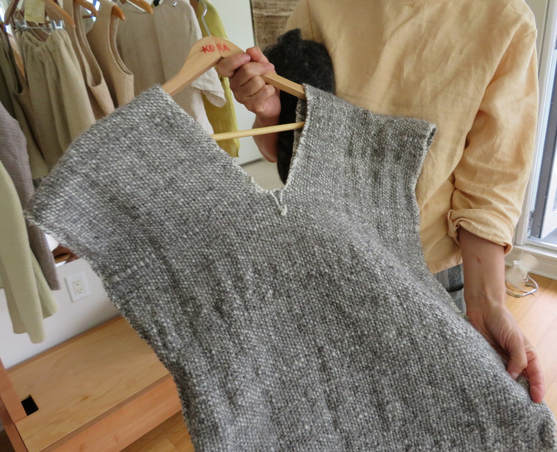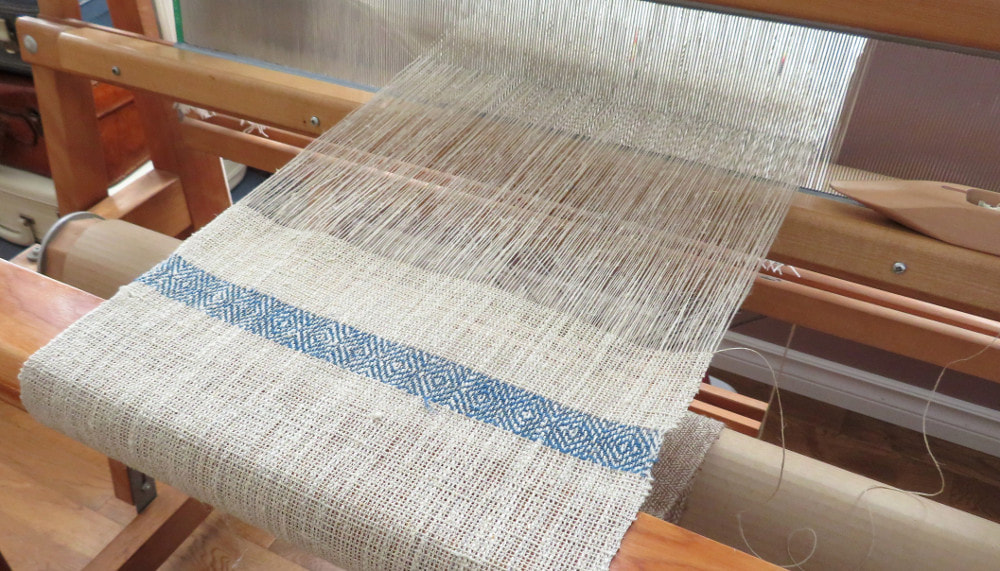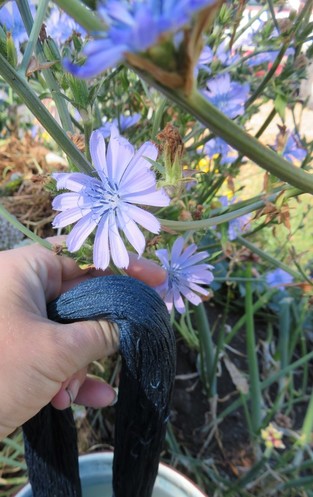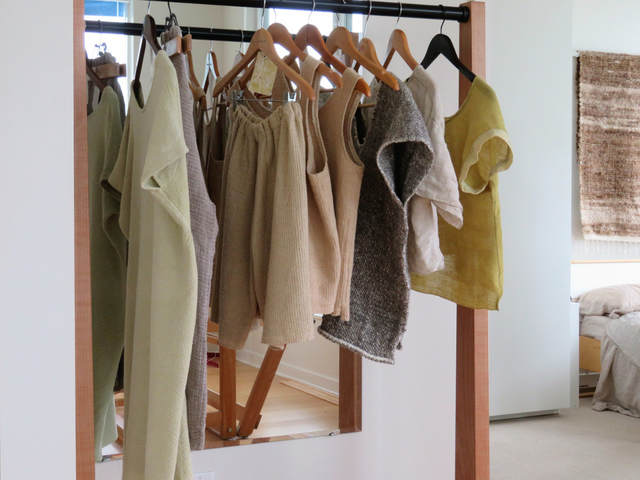|
Yes, you can use your handspun linen singles for weaving. Weavers for thousands of years of history did. You can too. Most linen warp is spun from the long, luscious flax fibres called line. These make for strong, shiny, and fine yarns. When wet spun by an expert, the yarn is smooth. All these qualities make it perfect for warp and weft. But what about poor tow? This often discarded fibre is described as hairy and weak. Not suitable. A waste of time and space. Click "read more" on the right to ...
Click "read more" on the right to ...
10/7/2018 A visit with WOVENWARESThe woman of Wovenwares are gifted fibre artists and well worth a pilgrimage into town to visit. They weave cloth. More amazingly, they weave clothing!Cloth made locally by local artisans, with as many locally sourced materials as possible. That's my kind of thing. As much as I want to do everything, growing fibres on the farm has taught me there is a finite amount of time in the day. Everything has it's rhythm and each element on the farm has it's task. I don't ask the sheep to eat bugs from the garden, likewise, I don't expect the chickens to grow wool. Why then, should I expect that I can do everything? At least, not until I find the time to invent a TARDIS. But I want to. Especially when I see what amazing things are possible.  Wovenwares gives me heart and hope. Here is the skill to create clothing from the materials I grow. I couldn't ask for better! And, wow! What skills these women have. Entering the studio, I'm bedazzled by the collection of handwoven goodies. Cloth, clothing, rugs, and hand dyed yarn. They work with local materials, connecting directly with the farmer whenever possible. Sustainable clothing at it's best. I learn something new with each visit, and this week I understood, I don't have to do every step myself. I couldn't make clothing as beautiful as this, but I can grow yarn. By working together, we can keep everything local, sustainable and beautiful. This morning petrichor was heavy in the air. Petrichor is a smell so strong; you can almost feel the texture gritting against your skin. It's a mixture of ocean and dust. But more than that. Petrichor is the smell rain makes after dry, grimy, hot summer days. It's unusual to experience petrichor here, as it seldom rains in summer and never in June. At least not since we moved to the farm nearly ten years ago. It is an unusual year for weather. I expect unusual will soon be the new norm. Most years, the rain stops on or before May first. There are a couple of rainy patches near midsummer and again at the end of August, but these showers usually miss the farm. It will rain at the neighbours and across the road, but not here. One of the things we strive for is low maintenance farming; farming without irrigation or rain in a Mediterranean climate. Most of the experiments on the farm have been focused on the assumption it won't rain in the summer. We've had great success with this. There are a few parts of the farm that are entirely irrigation-free and produce a decent crop even on poor soil. We've grown chickpeas, peas, soup peas, kale, squash, hot peppers, sunflowers, woad, flax, and tomatoes without irrigation or rain. Pretty darn neat. This year, we've been experimenting with different row and plant spacing as well as potatoes. But the rain has skewed our results - not that we mind - so we'll have to try it again next year. How are we growing these without irrigation? Click "read more" on the right to ...
|
CategoriesAll Airwell Angora Animal Fibre Boring Community Cotton Dryland Farming Dye Etsy Shop Experiments Fibre Prep Finance Flax Frugal Household Management Indigo Linen Local Cloth Mediterranean Climate Natural Dye Permaculture Plant Fibre Sewing Silk Tutorial Urban Fibre Vintage Wildcrafting Archives
February 2022
|
|
Created by Tracy Wandling of One Wing Freelance Graphic Design
|



 RSS Feed
RSS Feed
